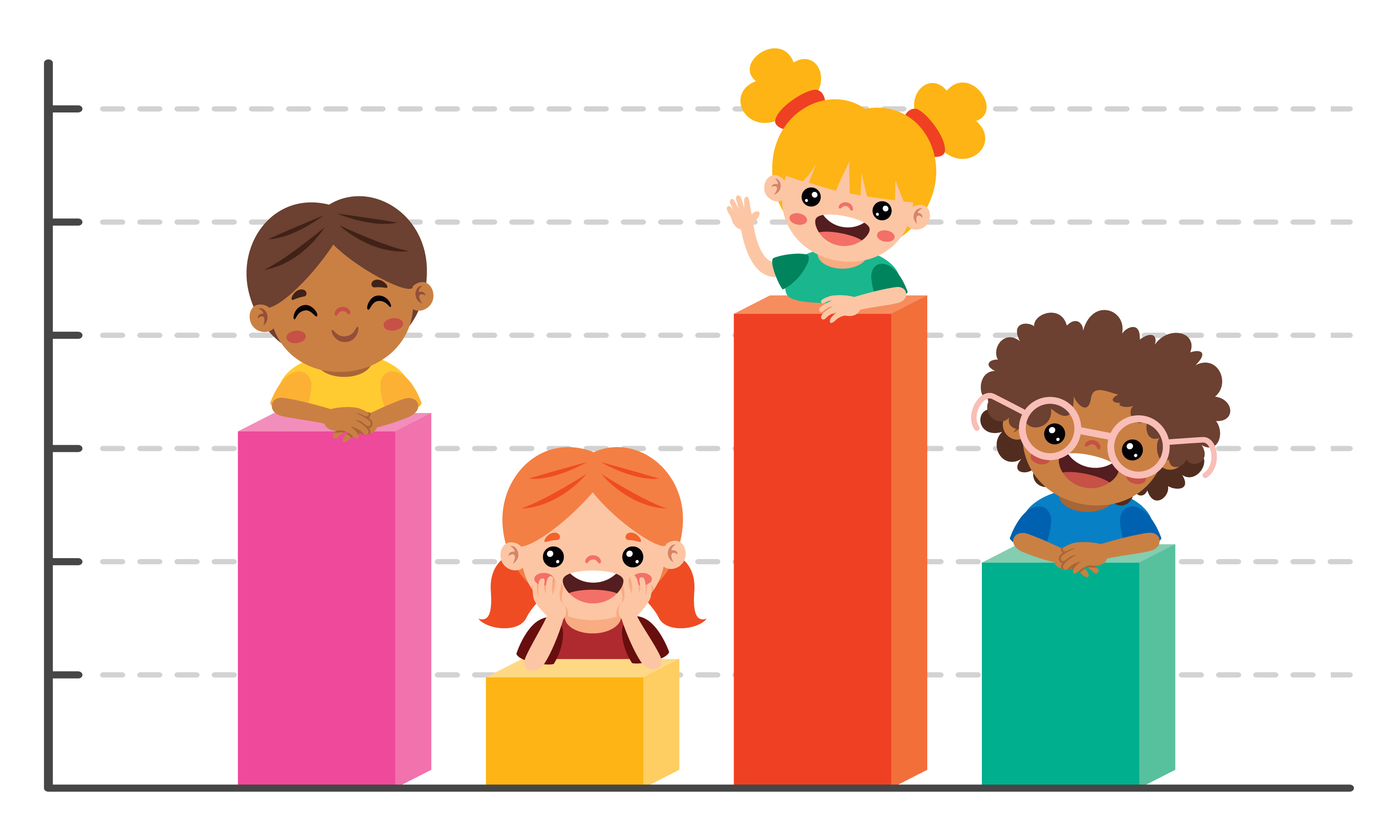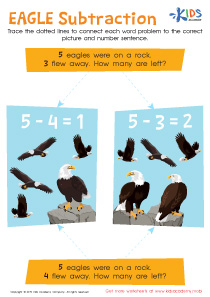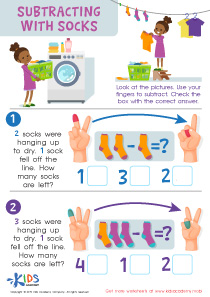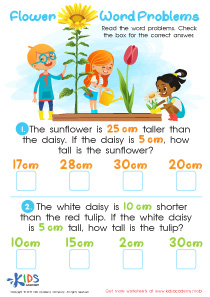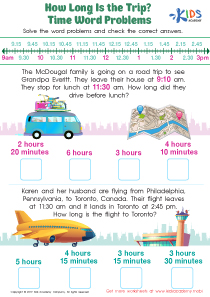Easy Graph Word Problems Worksheets for Ages 7-8
1 filtered results
-
From - To
Introducing our Easy Graph Word Problems School Worksheets, meticulously curated for children aged 7-8 years. These engaging worksheets are designed to make learning fun and interactive, helping young learners master the art of interpreting data through various graph types. Packed with colorful, thought-provoking problems, each worksheet encourages critical thinking and enhances numerical literacy. Whether in the classroom or at home, our school worksheets are perfect for providing kids with a solid foundation in basic graph reading and application. Dive into our collection and watch your child develop a keen analytical mind, ready to tackle more complex mathematical concepts with confidence and ease.
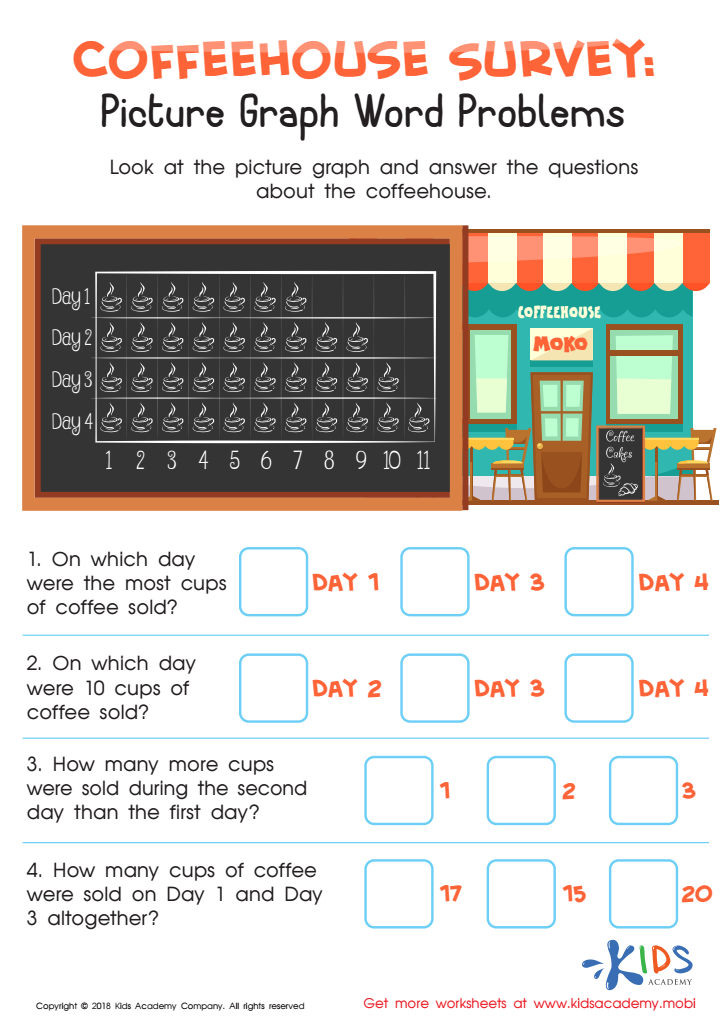

Coffeehouse Survey: Picture Graph Word Problems Worksheet
Unlocking the Power of Graphs: The Benefits of Easy Worksheets on Graph Word Problems
In the vibrant world of elementary education, school printables, especially those tailored for children aged 7-8 years, are invaluable tools. Among these, easy worksheets on graph word problems stand out as not only engaging but also fundamentally enriching for young learners. These worksheets serve as a cornerstone for building analytical skills, enhancing comprehension, and making mathematics a fun and interactive subject.
Why Focus on Graph Word Problems?
Graphs are more than just lines on papers; they are a universal language in the realms of science, business, technology, and even daily household management. Introducing children to this language through graph word problems helps them understand and interpret data visually, a skill increasingly important in today’s data-driven world.
1. Enhances Visualization Skills
Easy worksheets on graph word problems are crafted to help children visualize mathematical concepts. By translating numbers and operations into visual representations, children can see the practical applications of what they learn. This visual approach not only aids in understanding complex concepts but also retains their interest and curiosity.
2. Develops Critical Thinking
School printables that incorporate graph word problems encourage critical thinking. Children learn to analyze information, discern patterns, and make predictions based on the data presented. This form of problem-solving is crucial and goes beyond mathematics, aiding decision-making skills in everyday life.
3. Builds Real-World Application Knowledge
One of the significant advantages of graph word problems is their ability to connect mathematical theory with real-world scenarios. Children can relate the abstract elements of mathematics to tangible outcomes, such as understanding changes in weather patterns, tracking sports scores, or managing simple budgets. These connections demystify mathematics, showing its utility and relevance in various aspects of life.
4. Fosters Academic Confidence
Mastery of graph word problems through repetitive practice using easy worksheets can significantly boost a child’s confidence. As they become more proficient in interpreting and solving these problems, their overall academic self-esteem increases. This confidence can lead to a positive attitude towards challenging subjects and a willingness to engage more deeply with learning materials.
5. Encourages Independent Learning
Easy worksheets are designed to be student-friendly, allowing children to use them with minimal supervision. This autonomy in learning fosters independence, encouraging young learners to explore solutions and understand content at their own pace. Independence in learning not only enhances their problem-solving skills but also instills a lifelong love for learning.
** 6. Supports Collaborative Learning
While school printables are excellent for individual work, they also offer opportunities for collaborative learning. Graph word problems can be tackled in pairs or small groups, promoting discussion and the exchange of ideas among peers. This kind of collaborative problem-solving helps children learn to communicate their thoughts, listen to others, and work collectively towards solutions, which are critical social skills in both academic and real-world settings.
7. Customizable and Adaptable
One of the beauties of easy worksheets on graph word problems is their adaptability. Teachers can customize these resources to match the learning levels and interests of their students, making them more engaging. Whether it’s increasing the complexity of the problems or integrating themes that students are passionate about (like dinosaurs or space), these worksheets can be tailored to better meet educational goals and keep learning exciting.
8. Prepares for Higher Learning
Early exposure to graphing and data interpretation sets a solid foundation for more advanced mathematics and sciences. As children progress in their educational journey, they will encounter graphs and charts with increasing frequency and complexity. Building a strong base at a young age ensures that they are well-prepared and less intimidated by more complex analytical tasks in higher grades.
9. A Tool for Assessment
Teachers can use these worksheets not only as a teaching tool but also as a means of assessment. By observing how students solve graph word problems, educators can gauge understanding, identify areas where students struggle, and tailor subsequent lessons to address these gaps. This ongoing assessment helps in providing targeted educational support and enhances the learning experience for each child.
10. Fun and Engaging
Lastly, turning learning into a fun and engaging process is perhaps the most significant benefit of using easy worksheets on graph word problems. With colorful graphics, interesting data sets, and interactive elements, these printables can transform a routine classroom activity into an exciting learning adventure. Engaged students are motivated students, and when children enjoy what they are learning, their educational journey becomes more effective and impactful.
Conclusion
Easy worksheets on graph word problems are more than just school printables; they are a gateway to developing essential life skills in young learners. By fostering critical thinking, enhancing visualization, encouraging real-world connections, and building confidence, these resources play a crucial role in shaping a child's educational and personal development. As children navigate through these engaging worksheets, they not only learn about graphs and data but also embark on a path of lifelong learning and curiosity.

 Assign to My Students
Assign to My Students


